The Palestine Chronicle
1 May 2024 | 9:41 pm
1. Deaf, Mute and Starving – Gaza Mother Searches for Her Disabled Family among Rubble
The Palestine Chronicle spoke with 75-year-old Umm Ayman, mother of seven children, three of whom with special needs.
Israel's genocidal war on Gaza has spared nobody, with over 34,000 Palestinians killed and nearly 78,000 wounded in less than seven months.
People with pre-existing conditions and disabilities, however, have been exposed to an unbearable degree of suffering amid the catastrophic humanitarian situation.
According to UNICEF, even before the war, 21 percent of Gaza's households included at least one person with a disability.
The Palestine Chronicle spoke with Fatima Abu Bakra, known as Umm Ayman. The 75-year-old woman has seven children, three of whom with special needs.
'I Held on to My Husband' – Cancer Patients in Gaza Die from War and Siege
"I am a mother of three young men who are deaf and mute, and four daughters, three of whom are married and one who lives with me," Umm Ayman told The Palestine Chronicle.
"I live alone with my children east of Al-Bureij refugee camp in the central Gaza Strip. I separated from my husband many years ago, and I have been taking care of my family and looking after my sons alone since then," she continued.
"My three sons are deaf and mute. They are married and we all live together in a small house east of Al-Bureij, where I built a small apartment for them."
When Israeli occupation forces invaded the Al-Bureij camp in the first month of the war, Umm Ayman refused to leave her house, which is located less than a kilometer away from the fence separating besieged Gaza from Israel.
Secrets by the Sea – Gaza Survivors Seek Respite from Israeli Bombs, Heat and Tents
But a few weeks later, Israeli soldiers drew nearer to her house.
"At the end of December, we were surprised by the arrival of the occupation tanks and vehicles very close to my house. We were completely surrounded and we could not leave," Umm Ayman told us.
"The occupation vehicles besieged us for three days and we could not leave the house. The bombardment was severe, and my grandchildren were screaming from fear and hunger, the whole time," she said.
"I tried to calm them down and reassure them, but for three days, we had no access to food or water. I feared we would all die of hunger more than from the bombardment. It was an extremely hard situation for my sick sons and the children."
When the occupation forces began to withdraw, the family tried to leave the camp.
Where is My Son?'We Cannot Breathe' – Gaza Residents Living in Shelters, Inhaling Fume
"My sons and I went out holding white flags, and we managed to leave the camp. We headed to the displacement tents in the city of Rafah, in the south"
But Umm Ayman was injured and during the journey, she was separated from her son Sulaiman and his family.
"For months, I have been searching for my deaf-mute son and his family, his wife and their two daughters, but I had no luck.
'Domicide' – How and Why Israel Destroyed the Al-Sahli Towers in Gaza's Nuseirat Refugee Camp
At the end of January, after the complete withdrawal of the occupation forces from the camps in central Gaza, Umm Ayman and her family returned to Al-Bureij.
However, due to the presence of Israeli forces near the house, they were forced to settle in tents inside the camp. The woman still does not know the fate of her son and his family.
"Sulaiman is sick and unable to hear or speak. I searched for him everywhere, but I could not find him. I have asked our neighbors and relatives, but nothing came out so far," Umm Ayman said, desperate.
"I called his wife's mobile phone many times, but it's switched off, and there is no response. I am afraid something bad happened to my son. Maybe he has been killed by Israeli bombardment in Rafah or Khan Yunis. Or maybe they have all died from hunger. I haven't heard anything about them for several months."
'Afraid of Everything' – Palestine Chronicle Special Report 200 Days after the War on Gaza
Umm Ayman's only hope is to receive any information about her son.
"I miss him terribly. He has never been away from me before the war. He is used to my presence in his life, and I cannot live without him. I miss my grandchildren, too."
Umm Ayman told us that she already lost one of her sons in 2000, at the beginning of the Second Intifada.
"I don't want to lose another son. I hope I will find him soon and they are all safe. I wish the war would stop, and I could return home. I learned that the occupation completely demolished it, but it doesn't matter: I will live in a tent above my house, and I will never leave it."
(The Palestine Chronicle)

– Abdallah Aljamal is a Gaza-based journalist. He is a correspondent for The Palestine Chronicle in the Gaza Strip. His email is abdallahaljamal1987@gmail.com
The post Deaf, Mute and Starving – Gaza Mother Searches for Her Disabled Family among Rubble appeared first on Palestine Chronicle.
1 May 2024 | 9:18 pm
2. Humanity at Its Best: Why are US Students Rising for Gaza?
By Ramzy Baroud 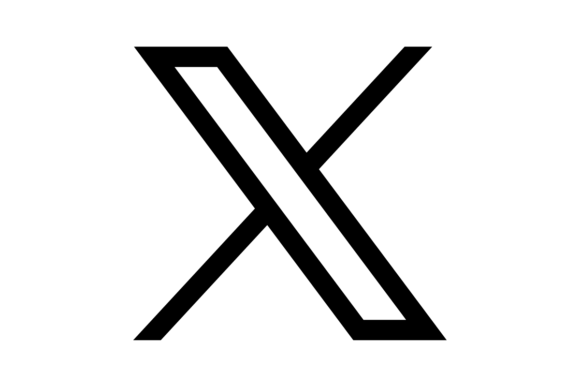
Despite mass arrests, starting in Columbia, and the direct violence against peaceful protesters everywhere, the movement has only grown stronger.
The mass protests at dozens of US universities cannot be reduced to a stifling and misleading conversation about antisemitism.
Thousands of American students across the country are not protesting, risking their own futures and very safety, because of some pathological hate for the Jewish people. They are doing so in a complete rejection of, and justifiable outrage over the mass killing carried out by the state of Israel against defenseless Palestinians in Gaza.
They are angry because the bloodbath in the Gaza Strip, starting on October 7, is fully funded and backed by the US government.
These mass protests began at the University of Columbia on April 17 before covering all of US geography, from New York to Texas and from North Carolina to California.
The protests are being compared, in terms of their nature and intensity, to the anti-war protests in the US against the Vietnam War in the 1960s and 70s.
While the comparison is apt, it is critical to note the ethnic diversity and social inclusiveness in the current protests. On many campuses, Arab, Muslim, Jewish, Black, Native American and White students are standing shoulder to shoulder with their Palestinian peers in a unified stance against the war.
None of them is motivated by fear that they could be drafted to fight in Gaza, as was, indeed, the case for many American students during the Vietnam War era. Instead, they are united around a clear set of priorities: ending the war, ending US support of Israel, ending their universities' direct investment in Israel and the recognition of their right to protest. This is not idealism, but humanity at its finest moments.
Despite mass arrests, starting in Columbia, and the direct violence against peaceful protesters everywhere, the movement has only grown stronger.
On the other side, US politicians, starting with President Joe Biden, accused the protesters of anti-Semitism, without engaging with any of their reasonable, and globally-supported demands.
Once again, the Democratic and Republican establishments stood together in blind support for Israel.
Biden condemned the "antisemitic protests" describing them as "reprehensible and dangerous".
A few days later, the speaker of the US House of Representatives, Mike Johnson, visited the university under tight security, using language that is hardly suitable for a country which claims to embrace democracy, respect freedom of expression and right of assembly.
"We just can't allow this kind of hatred and antisemitism to flourish on our campuses," he said, adding: "I am here today joining my colleagues, and calling on President (Minouche) Shafik to resign if she cannot immediately bring order to this chaos."
Shafik, however, was already on board, as she was the one who had called for the New York Police Department to crack down on the protesters, falsely accusing them of anti-Semitism.
US mainstream media has helped contribute to the confusion and misinformation regarding the reasons behind the protests.
The Wall Street Journal, once more, allowed writers such as Steven Stalinsky to smear young justice activists for daring to criticize Israel's horrendous genocide in Gaza.
"Hamas, Hezbollah, the Houthis and others are grooming activists in the U.S. and across the West," he alleged, thus, once more taking a critical conversation about US support of genocide into bizarre and unsubstantiated directions.
US establishment writers may wish to continue to fool themselves and their readers, but the truth is that neither Hezbollah or Hamas 'recruiters' are active in Ivy League US universities, where young people are often groomed to become leaders in government and large corporations.
All such distractions are meant to avoid the undeniable shift in American society, one that promises a long-term paradigm shift in popular views of Israel and Palestine.
For years prior to the current war, Americans have been changing their opinions on Israel, and their country's so-called 'special relationship' with Tel Aviv.
Young Democrats have led the trend, which can also be observed among independents and, to some extent, young Republicans.
A statement that asserts that "sympathies in the Middle East now lie more with the Palestinians than the Israelis", would have been unthinkable in the past. But it is the new normal, and latest opinion polls regarding the subject, along with Biden's dwindling approval ratings, continue to attest to this fact.
The older generations of American politicians, who have built and sustained careers based on their unconditional support for Israel, are overwhelmed by the new reality. Their language is confused and riddled with falsehoods. Yet, they are willing to go as far as defaming a whole generation of their own people – the future leaders of America – to satisfy the demands of the Israeli government.
In a televised statement on April 24, Israeli Prime Minister Benjamin Netanyahu described the protesters as "antisemitic mobs" who "have taken over leading universities", alleging that the peaceful protesters are calling "for the annihilation of Israel". His words should have outraged all Americans, regardless of their politics and ideology. Instead, more US politicians began parroting Netanyahu's words.
But political opportunism shall generate a blowback effect, not just in the distant future, but in the coming weeks and months, especially in the run-up to the presidential elections.
Millions of Americans are clearly fed up, with war, with their government's allegiance to a foreign country, to militarism, to police violence, to the unprecedented restrictions on freedom of speech in the US and more.
Young Americans, who are not beholden to the self-interests or historical and spiritual illusions of previous generations, are declaring that 'enough is enough'. They are doing more than chanting, and rising in unison, demanding answers, moral and legal accountability and an immediate end to the war.
Now that the US government has taken no action, in fact continues to feed the Israeli war machine in its onslaught against millions of Palestinians, these brave students are acting themselves. This is certainly an awe-inspiring, watershed moment in the history of the United States.
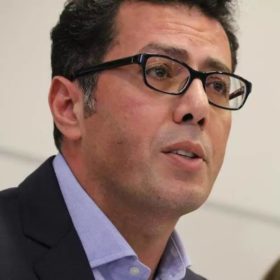
– Ramzy Baroud is a journalist and the Editor of The Palestine Chronicle. He is the author of six books. His latest book, co-edited with Ilan Pappé, is "Our Vision for Liberation: Engaged Palestinian Leaders and Intellectuals Speak out". Dr. Baroud is a Non-resident Senior Research Fellow at the Center for Islam and Global Affairs (CIGA). His website is www.ramzybaroud.net
The post Humanity at Its Best: Why are US Students Rising for Gaza? appeared first on Palestine Chronicle.
1 May 2024 | 7:18 pm
3. ‘I Don’t Regret It’ – Turkish Kungfu Champ Slams Probe Into Raising of Palestinian Flag at Euro Champs
"I am proud of myself for the inconvenience I caused, I do not regret it, and if I have the opportunity, I will do it again."
Turkish Kungfu champion Necmettin Erbakan Akyuz, who raised the Palestinian flag at a European Championships contest, has said he does not regret his protest action.
The Wushu Kungfu Federation of Europe (WKFE) announced that it had launched an "internal investigation" into "political displays" that "were reported during the prize-giving ceremonies, reportedly initiated by individual members associated with the TWF.
Akyuz, who holds six championships in the martial art, displayed a Palestinian flag after being presented with the European Championship gold medal during the award ceremony. He also performed the Dabke, a traditional Palestinian dance on the podium.
View this post on Instagram
A post shared by Necmettin Erbakan Akyüz (@necmettinerbakanakyuz)
The championship event was held in Istanbul last December.
"I am proud of myself for the inconvenience I caused, I do not regret it, and if I have the opportunity, I will do it again," Akyuz said in a statement on Instagram on Monday.
"You can give the penalty, take away my championships, I don't care, I did it risking the end of my sports career."
Values 'Not Aligned'The WFKE also said "Immediate measures were taken on-site, including personal meetings and official protests, to strongly contest these occurrences. Such actions do not align with our values and standards within the WKFE community."
Ben Necmettin Erbakan Akyüz
Madalyaların en güzelini aldım
Mazlumların sesi olmak adına yaptığım hareketten dolayı Avrupa Federasyonu soruşturma açtı
Yaptıklarımdan dolayı pişman değilim, verilecek kararlarım nezdimde hiçbir kıymeti yoktur.
NEHİRDEN DENİZE ÖZGÜR FİLİSTİN
. pic.twitter.com/Jpo8yjEnP1
— Necmettin Erbakan Akyüz (@neakyuz) April 29, 2024
Akyuz said the federation had "no humanity, no conscience … no honor, no dignity."
He also said on X: "The European Federation opened an investigation because of my action to be the voice of the oppressed. I do not regret what I have done…"
"Free Palestine from river to sea," Akyuz stressed.
Gaza Genocide ContinuesCurrently on trial before the International Court of Justice for genocide against Palestinians, Israel has been waging a devastating war on Gaza since October 7.
According to Gaza's Ministry of Health, 34,568 Palestinians have been killed, and 77,765 wounded in Israel's ongoing genocide in Gaza starting on October 7.
Moreover, at least 7,000 people are unaccounted for, presumed dead under the rubble of their homes throughout the Strip.
Turkish European Kung Fu champion Necmettin Erbakan Akyuz raises the Palestinian flag during his coronation in solidarity with Gaza pic.twitter.com/T2hu4n8GHC
— The Saviour (@stairwayto3dom) December 17, 2023
Palestinian and international organizations say that the majority of those killed and wounded are women and children.
The Israeli war has resulted in an acute famine, mostly in northern Gaza, resulting in the death of many Palestinians, mostly children.
The Israeli aggression has also resulted in the forceful displacement of nearly two million people from all over the Gaza Strip, with the vast majority of the displaced forced into the densely crowded southern city of Rafah near the border with Egypt – in what has become Palestine's largest mass exodus since the 1948 Nakba.
Israel says that 1,200 soldiers and civilians were killed during the Al-Aqsa Flood Operation on October 7. Israeli media published reports suggesting that many Israelis were killed on that day by 'friendly fire'.
(PC, Anadolu)
The post 'I Don't Regret It' – Turkish Kungfu Champ Slams Probe Into Raising of Palestinian Flag at Euro Champs appeared first on Palestine Chronicle.
30 Apr 2024 | 10:37 pm
4. ‘I Held on to My Husband’ – Cancer Patients in Gaza Die from War and Siege
"I held on to my husband, and told him he was everything for me, that I didn't want to lose him."
Cancer patients from Gaza, including children, have been systematically denied treatment by Israeli authorities, due to the blockade imposed on the Strip since 2006.
The situation for cancer patients, however, has rapidly deteriorated since the outbreak of the war on October 7.
Israel's systematic targeting of hospitals and the complete siege imposed on the war-torn enclave have restricted access to any form of treatment.
The Palestine Chronicle spoke with the family of Tariq Subh, a 28-year-old journalist who passed away on April 19 from cancer, after he was denied access to treatment since the start of the war.
My Brother Tariq"My brother Tariq was a media professional at Al-Aqsa Network, he worked with the Jerusalem Media Committee, and was among the most prominent activists on social networks," Abed Subh told The Palestine Chronicle.
"He was diagnosed with brain cancer about five years ago and underwent a lengthy treatment journey in Egypt, where he overcame the disease, and God completely healed him," he said.
'We Cannot Breathe' – Gaza Residents Living in Shelters, Inhaling Fume
After recovering, Tariq continued regular treatment to prevent a recurrence of the cancer.
"God blessed him with a beautiful daughter named Ayla, who is two years old, and he was living a normal life before the Israeli war on Gaza began in October 2023," Tariq added.
Dying EverydayTariq's wife, Walaa, told us that the beginning of the war raised immediate concerns in the family about the possibility to adhere to his treatment.
"The occupation blocked the entry of medicines and medical supplies, leading to significant health setbacks for Tariq, causing the cancer to spread throughout his body," Walaa told The Palestine Chronicle.
Walaa told us that they immediately contacted all health institutions in the Strip, but it was not an easy task.
'Domicide' – How and Why Israel Destroyed the Al-Sahli Towers in Gaza's Nuseirat Refugee Camp
"The occupation took the Turkish Friendship Hospital out of service. It invaded the medical complex and turned it into military barracks, where it is still stationed today. That was the only hospital dedicated to treating cancer patients in the Gaza Strip," Walaa noted.
"We immediately noticed that Tariq began to suffer significant health setbacks," she said.
"He rapidly lost the ability to walk, and he remained lying in bed on one side of his body, unable to move or turn, leading to sores and infections on his body".
After searching in every hospital and pharmacy, the family managed to provide him with a medical mattress, but Tariq's health continued to deteriorate, with high temperature and excruciating pain throughout his body.
"I saw my husband dying every day before my eyes and our young daughter Ayla's eyes, but I could not help him or protect him from death," Walaa said, with a shaking voice.
"After great efforts, we managed to transfer him to the European Hospital in Gaza, where he stayed for one week, and despite his desperate condition, we did everything in our power to obtain a medical transfer for treatment abroad."
Finally, the family managed to obtain a medical referral for treatment in Egypt, and after much hardship, they reached the Al-Arish Hospital.
"Tariq spent several days there and eventually died from complications of cancer," Walaa told us.
'Afraid of Everything' – Palestine Chronicle Special Report 200 Days after the War on Gaza
"My husband died after suffering for seven months during the war. People died from the Israeli bombing, and my husband Tariq died in front of our eyes dozens of times," she said in tears.
"Pain ravaged his body and he died as a martyr. His death is yet another crime by the Israeli occupation."
Walaa told us that Tariq was everything for her. During the war, the woman lost her father, Professor Hani, her mother Marwa, her brothers Ahmed, Abdul Rahman, and Omar, her uncles Ahmed, Mohammed, Khaled, and Jamal.
"They all became martyrs in this war after the occupation targeted the residential buildings they lived in," she said.
"I held on to my husband, and told him he was everything for me, that I didn't want to lose him."
Walaa is a pharmacy graduate and, as a medical specialist, helped her husband during his treatment, but now she feels completely lost.
"My husband Tariq died in front of me and my daughter at the Al-Arish Hospital in Egypt. I hope he is the last one to die from cancer, and that efforts are made to save the lives of hundreds of patients who suffer pain and death in the Gaza Strip," she said, in tears.
(The Palestine Chronicle)

– Abdallah Aljamal is a Gaza-based journalist. He is a correspondent for The Palestine Chronicle in the Gaza Strip. His email is abdallahaljamal1987@gmail.com
The post 'I Held on to My Husband' – Cancer Patients in Gaza Die from War and Siege appeared first on Palestine Chronicle.
30 Apr 2024 | 6:19 pm
5. Long Years of Dispossession – Will the Palestinian Narrative Find Safe Haven?
By Jehan Helou
Will the media accompany this transformation and change gear to embrace our narrative? Will the Palestinian narrative find Safe Haven at last?
Despite the long years of Dispossession and strife Palestinians are still struggling to have their narrative heard and normalized. Recalling what Edward Said wrote in LRB forty years ago "the premises on which Western support for Israel is based are still maintained even though the reality, the facts, cannot possibly bear these premises out?" The challenge of this reality is a matter of struggle.
The main media networks serve as the forceful tool of the powerful adopting the Israeli narrative, spreading abhorrent lies, and distorting the Palestinian narrative.
Our people in Gaza have been forsaken. Israel's escalating genocide and horrific war crimes continue with absolute impunity. The main aim of this genocide is to kill thousands of Palestinians, ethnically cleanse the rest and turn Gaza to Stone Age, to serve Israel's strategic aim of finalising its colonial settlement of ruling all the land of historic Palestine!
Every day our anger deepens while shock persists, unable to grasp and comprehend why this mass targeted killing, starvation and destruction against our people has not stopped. This genocide should never have started and should not continue.
Did Gaza constitute a threat to the security, hegemony and power of the neo-colonialist supporting it? Is there no rationale to guide their policies? Or is it the military industry? Endorsing the most horrific atrocities in our modern age, killing of thousands of professionals, displacing, and starving the most dispossessed and occupied people in the world? Does the targeted killing of thousands of children and their dreams not move them?
Our world order crumbles with the US standing against permanent ceasefire. It bluntly slaps the whole global community by accepting Israel's blatant violations of international law, which most Western countries were vital in drafting, making these laws almost obsolete.
Context of Palestine's Narrative
Zionism as a settler colonialist movement occupied the larger part of Palestine in 1948 by committing horrendous massacres and carnages on Palestinians, causing total dispossession (al-Nakba). It uprooted more than 750,000 Palestinians and destroyed more than 450 villages. Israel was completely supported by the Neo- Colonialist countries who nourished and empowered it.
Uprooted Palestinians became refugees in surrounding Arab countries. As a child, I was uprooted with my family to Lebanon; we lived the bitter days of dispossession!
Israel refused the return of any refugee despite the recurring UN 194 resolution. Nakba continues, as refugee camps in Occupied West Bank are invaded daily in the Occupied Territory while most refugees in exile live in dire conditions.
The Western powers knowing that 70% of Gazans are refugees,
support Israel's attempts to dismantle the United Nations Relief and Works Agency (UNRWA), established in 1949, to support refugees until their return to their homeland.
Israel against any Liberation Struggle
Israel, always determined to abort any Palestinian resistance, accordingly decided to terminate the Palestinian Revolution launched (1967); a revolution warmly embraced by millions of Palestinians, Arabs, and peoples around the world.
Israel cooperated with Arab reactionary forces mainly Jordan and Lebanon for this purpose. When this failed despite horrendous atrocities, Israel invaded Lebanon (1982) to liquidate the Palestinian freedom fighters (Fatah and other Palestine Liberation Organization resistance factions), whom Israel called 'terrorists'.
Lebanese villages were severely damaged, Palestinian refugee camps were flattened. History repeats itself today in Gaza with a similar narrative.
Despite the heroism shown during Israel's siege of Beirut, concessions were made due to fear of destruction of the city. The US did not respect its guarantees and allowed the killing of thousands of civilians in the massacre of Sabra and Shatila, fully supported by the Israeli army led by Ariel Sharon, known as the 'Butcher of Beirut'. I was there, as an active participant, living the days of heroism and massacres.
Two Intifadas and Deceptive Peace, the Nakba Continues
Palestinians surprised their enemies and the world by the eruption of a great uprising (Intifada-1987) in the Occupied Palestinian Territory (OPT). It was called the 'Stone Intifada' as it was based on youth participation and peaceful resistance. Palestinians thought it was a great opportunity to have a peaceful and just solution to the Palestinian cause.
The Oslo Accords (1993) between Israel and the PLO, guaranteed by the US, entailed establishing a Palestinian state by the year 2000, was completely obstructed by Israel who used it to cement its settlements and occupation. The majority of Palestinian people and their organisations opposed Oslo, arguing that it did not guarantee Palestinians' National Inalienable Rights.
The second Palestinian Uprising (2000) was a reaction to the failure of the Oslo and ongoing Israeli occupation. Israel's response was bloody and destructive. Israeli occupation accelerates and any just solution disappears!
Since 2008, Israel has launched five bloody aggressions against Gaza, imposing a complete ongoing siege. In 2006, Hamas had won the internationally scrutinised elections in all the OPT. Hamas and other resistance organizations were a natural outcome of the ongoing dispossession. Western powers and Israel should know that they cannot be defeated by force. The only way to end resistance is by ending the Occupation. Yet, this was never put this on the table as the best choice.
Israel and Hamas are depicted as equal powers to justify the genocide. Israel is the fourth strongest military power in the world, with sophisticated weapons shamelessly tested on Palestinians. Hamas and other factions represent guerrilla freedom fighters. They have no aeroplanes, no missiles, and their rockets are primitive and have limited impact.
Let it Be a Tale!
Today as people around the world demonstrate, including thousands of anti-Zionists Jews, as they witness the reality, they say "Palestine liberates us"! Zionism is unmasked. People see its colonial and racist reality. Zionism must be dismantled, as was the case with Apartheid South Africa.
The future is for a democratic, free Palestine State where Muslims, Christians and Jews are equal citizens, 'from the river to the sea'!
Accordingly, will the liberal and credible media accompany this transformation and change gear to embrace our narrative? Will the Palestinian narrative find Safe Haven at last?
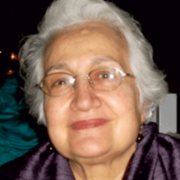
– Jehan Helou was born in Haifa, uprooted with her family to Lebanon in 1948. She was a pioneer in the Palestinian national struggle and women's liberation movement. She directed the Tamer Institute for Community Education in Ramallah and has been president for the Palestinian section of the International Board on Books for Young People (IBBY) since 2003. She contributed this article to The Palestine Chronicle.
The post Long Years of Dispossession – Will the Palestinian Narrative Find Safe Haven? appeared first on Palestine Chronicle.
29 Apr 2024 | 1:18 pm
6. Jill Stein – Who is the US Presidential Candidate Arrested at Pro-Palestine Protest?
Jill Stein's recent arrest has been highlighted as an example of how peaceful demonstrators are cracked down upon unjustly by US law enforcement.
Green Party Presidential candidate, Jill Stein, was arrested by police at Washington University in St. Louis this Saturday, making her one of hundreds arrested during anti-war protests taking place at college campuses throughout the United States.
Yet, many who are stuck in the American two-party paradigm are not even aware that this third option exists, due to a lack of relevant media coverage.
Who is Jill Stein?Born in Chicago, Illinois, Jill Stein practiced internal medicine in her professional life for 25 years and was a graduate of Harvard Medical School in 1979, after having studied psychology, sociology, and anthropology prior to this.
While still working as a physician, Stein found intrigue in the connection between health and the quality of one's local environment, leading her to a path of activism after having noticed the links between toxic exposures and illness.
As Pro-Palestinian Protests Escalate, Israel Lobby's Attack on Academic Freedom Continues
In the late 1990s, she began protesting the "Filthy Five" coal plants in Massachusetts and ended up receiving awards for environmental activism in the years 1998, 1999, 2000 and 2004.
She also co-authored two reports on the issue, entitled 'In Harm's Way: Toxic Threats to Child Development' in 2000, and the 'Environmental Threats to Healthy Aging' in 2009. Despite having joined the Democratic Party in the United States, she decided to leave and join the Green Party when "killed campaign finance reform" in her State, she told reporters in 2016.
Having organized two campaigns to become governor of Massachusetts, despite beating her Republican opposition fell short of winning both races.
She did however run for the local legislative body in Lexington, Massachusetts, winning a seat in both 2005 and 2008. At the Green-Rainbow Party state convention in 2006, Jill Stein was nominated for Secretary of the Commonwealth and in a two-way race with a Democrat, gained 353,551 votes, or the equivalent of 17.7% of the vote.
Presidential ElectionState-Backed Censorship: Israel's Persecution of Nadera Shalhoub-Kevorkian
In 2012, Jill Stein ran for President of the United States, making history as the first Green Party candidate to have qualified for federal matching funds, but fell far short of competing with Barack Obama and Mitt Romney who she accused of both being representatives of Wall Street.
In 2016, Stein again won 1 percent of the popular vote in the Presidential election and warned what the two-party corporate system could foster as the result of electing either Hillary Clinton or Donald Trump at the time.
During 2016, Jill Stein was also arrested for her activism that supported the Standing Rock protests by the North Dakota authorities.
Assisting non-profits and marginalized communities to combat environmental injustice and racial discrimination, she has managed to win victories on "campaign finance reform, racially-just redistricting, and the clean-up of incinerators, coal plants, and other toxic threats".
In Service of Western Supremacy – Why Germany Provides Unwavering Support to Israel
She has also long been a proponent of a Green New Deal, ending the US's foreign wars and advocates for respecting international human rights law, as well as a Medicare-for-all system.
As a Jewish American, she has also long been an active supporter of Palestinian human rights and has been particularly vocal in condemning Israel's genocide in Gaza. Stein, along with Cornell West are the only two actively pro-Palestinian Presidential Candidates who are running for office in the 2024 elections.
Jill Stein's recent arrest, while being present in supporting the ongoing mass-student protest movement across college campuses, has been highlighted as an example of how peaceful demonstrators are cracked down upon unjustly by US law enforcement.
(The Palestine Chronicle)
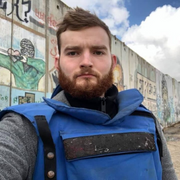
– Robert Inlakesh is a journalist, writer, and documentary filmmaker. He focuses on the Middle East, specializing in Palestine. He contributed this article to The Palestine Chronicle.
The post Jill Stein – Who is the US Presidential Candidate Arrested at Pro-Palestine Protest? appeared first on Palestine Chronicle.
28 Apr 2024 | 8:51 pm
7. War, Heat and Insects – This is What Life in a Gaza Tent Looks Like
The Palestine Chronicle spoke with two Palestinians currently displaced in the city of Deir Al-Balah, in the central Gaza Strip.
Amid the unparalleled scale of death and destruction, at least 1.9 million people were displaced by Israel's genocidal war on the Gaza Strip, according to UN figures.
The total population of Gaza, at least prior to the war, was 2.3 million people.
The vast majority of these refugees are currently living in tents, located in makeshift camps, due to Israel's systematic targeting of UN shelters, schools, hospitals, and even mosques and churches.
Living in a tent, however, is not equivalent to safety as many airstrikes and artillery shelling have targeted the encampments across various regions of the besieged Strip.
Moreover, the living conditions in the tents are extremely poor, especially following an unusual heatwave in Gaza, which reportedly already killed two children.
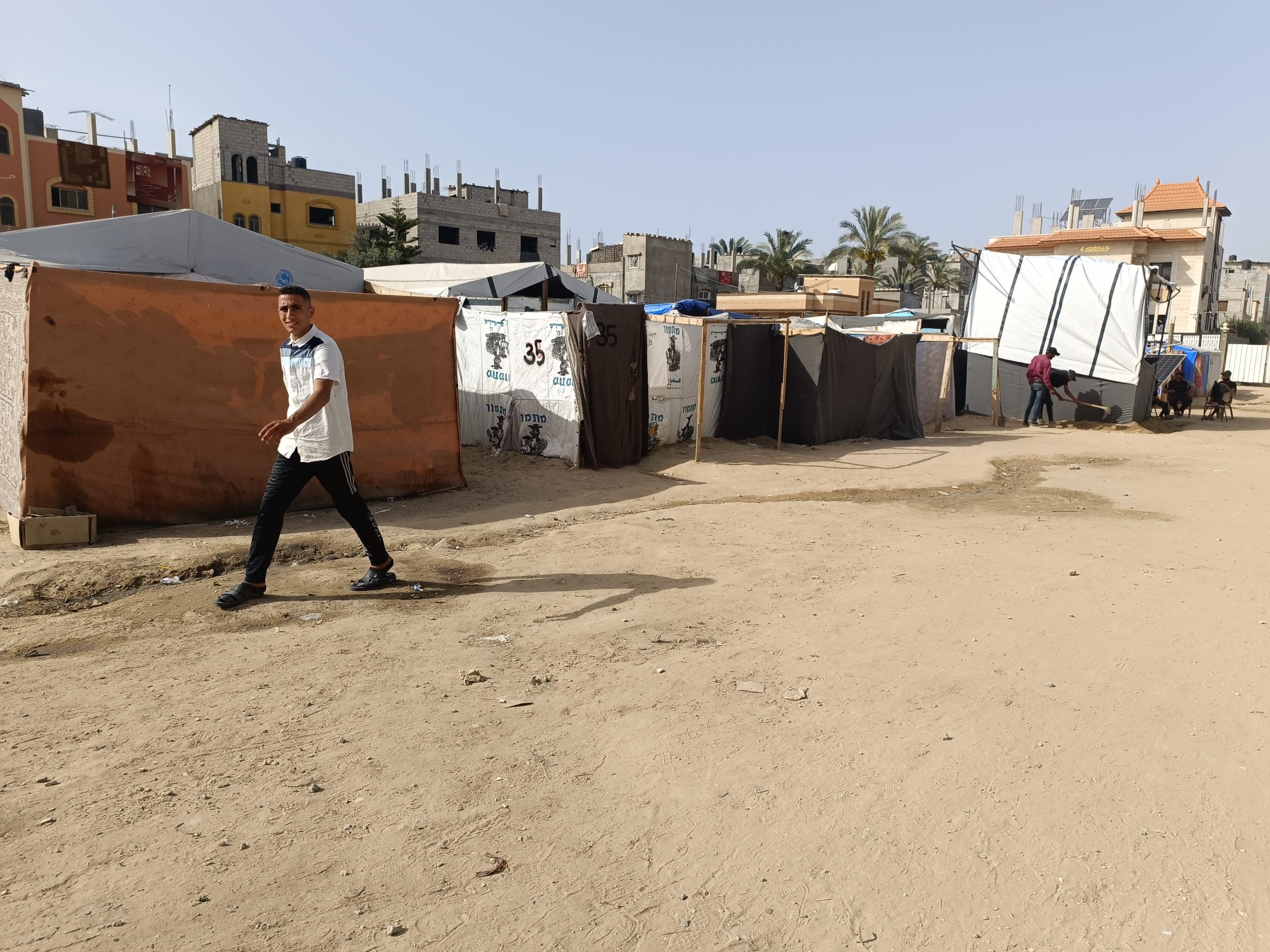
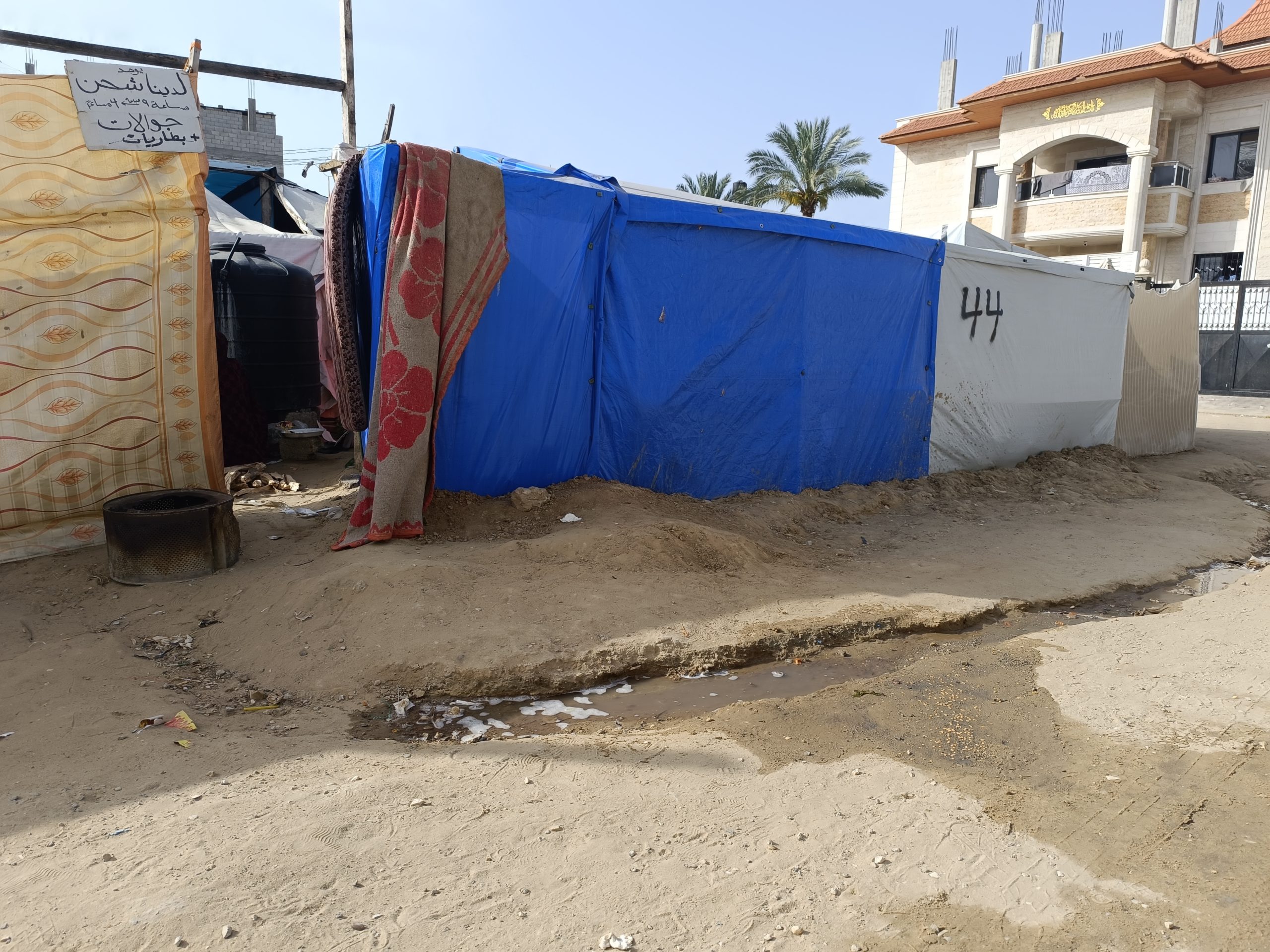
Philippe Lazzarini, UNRWA Commissioner-General, explained on Saturday that Palestinians living in the tents have to endure "death, hunger, disease, displacement, and now living in greenhouses-like structures under scorching heat".
The Palestine Chronicle spoke with two Palestinians currently displaced in the city of Deir Al-Balah, in the central Gaza Strip.
Life in a TentHajjah Shaimaa al-Eisawi is living in a tent with her family, after escaping from the Hamad Towers in the southern city of Khan Yunis, which were targeted by the occupation forces.
"The tent is extremely hot, and the overall situation is very difficult. There are insects everywhere, the heat is intense, and it is impossible to adapt to this life," al-Eisawi told the Palestine Chronicle.
"Children suffer from everything. Although we constantly clean the tent, there are insects everywhere," she added.
Al-Eisawi and her family remained homeless when Israel completely destroyed the city of Hamad.
"We managed to buy an apartment in Hamad with great difficulty. We were very happy but the occupation did not give us time to enjoy living in it. When the war broke out, we were forced to flee from our house, and we found out that it was completely destroyed."
Secrets by the Sea – Gaza Survivors Seek Respite from Israeli Bombs, Heat and Tents
Al-Eisawi fled to the Nuseirat refugee camp and then settled in Deir Al-Balah.
"We spent the winter struggling with severe cold in the tents, and now we are suffering from the heat."
Al-Eisawi's husband, who suffers from heart disease, expressed his desire to go back to Hamad, so they decided to go back and they lived in their destroyed house for a week.
"Then the occupation forces invaded the city again, and it was a very difficult week under intense bombardment," she explained.
When they tried to leave, however, they were forced to cross Israeli checkpoints. On their third attempt, Israeli occupation forces arrested al-Eisawi's husband while the rest of the family managed to return to the tents in Deir al-Balah.
"My husband has a heart condition and cannot endure torture or imprisonment, I hope he will be released soon," al-Eisawi told us, with a shaky voice.
"Our life means nothing without him, we rely on him for everything. We hope the war will end, and we can live in safety," she said.
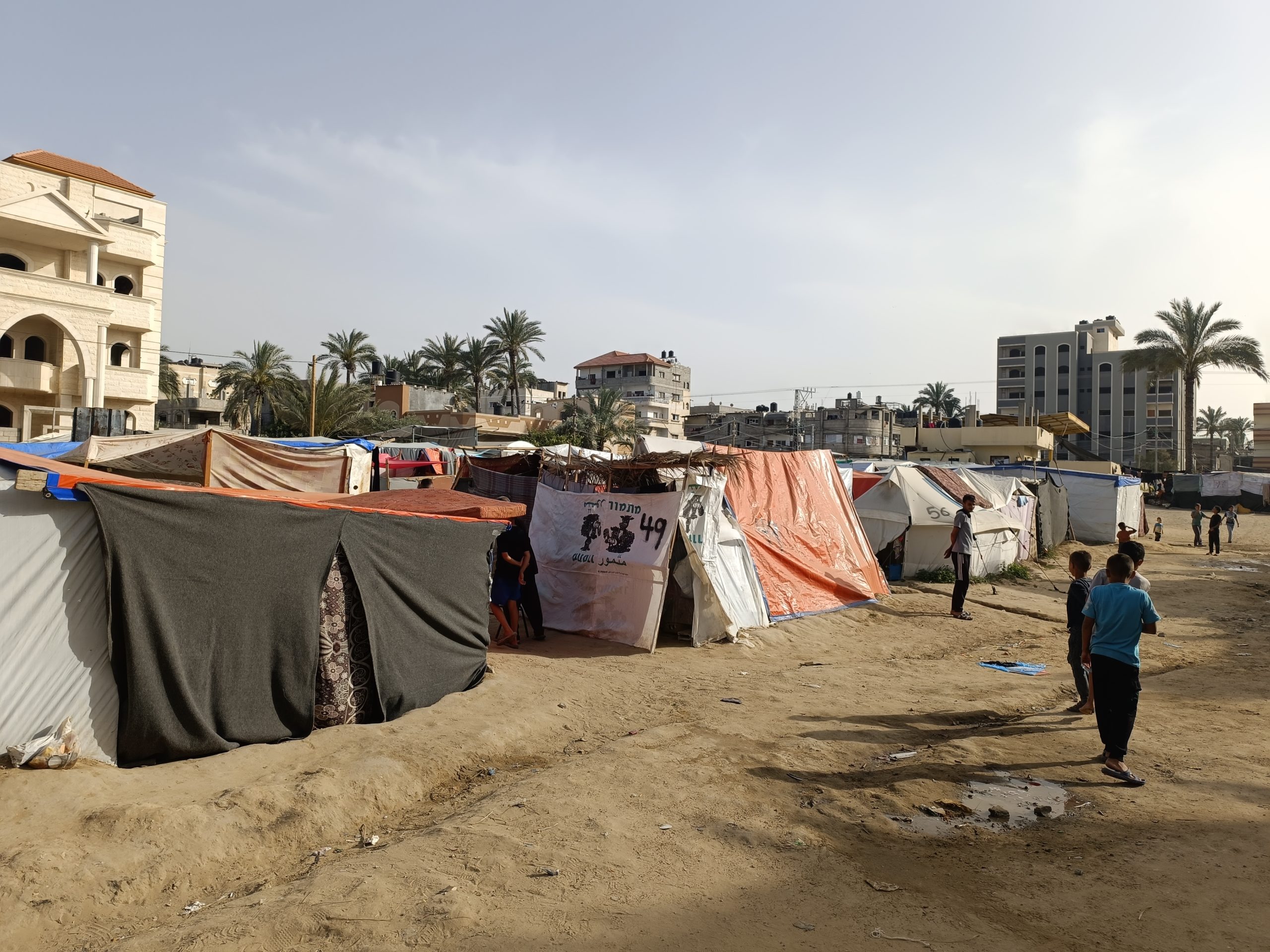
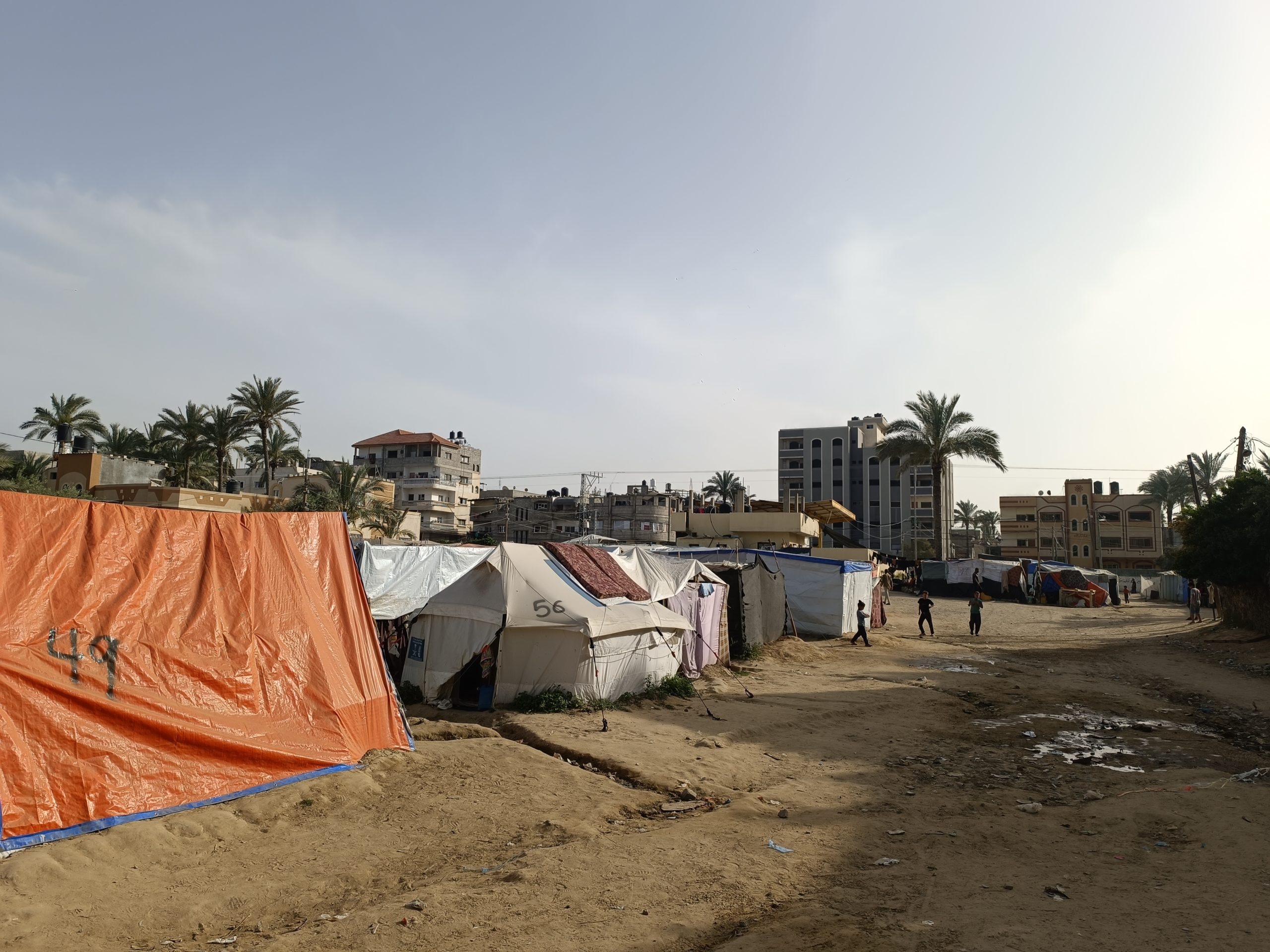
Even amid extreme conditions, however, Palestinians continue to show incredible resilience.
Many refugees decided to organize activities and set up schools in the encampments, to allow children to study despite the war.
Hajj Akram al-Ajjouri fled from the Jabaliya refugee camp, in the north, to Nuseirat, in central Gaza, and remained there for a month.
When Israeli forces invaded Nuseirat, al-Ajjouri and his family headed to Rafah, where they stayed for a month and a half. Later, they returned to Nuseirat for 20 days before settling in tents in the city of Deir al-Balah.
"In all the encampments, I have organized beautiful activities for the displaced people, including events to praise the Prophet Muhammad", al-Ajjouri told The Palestine Chronicle.
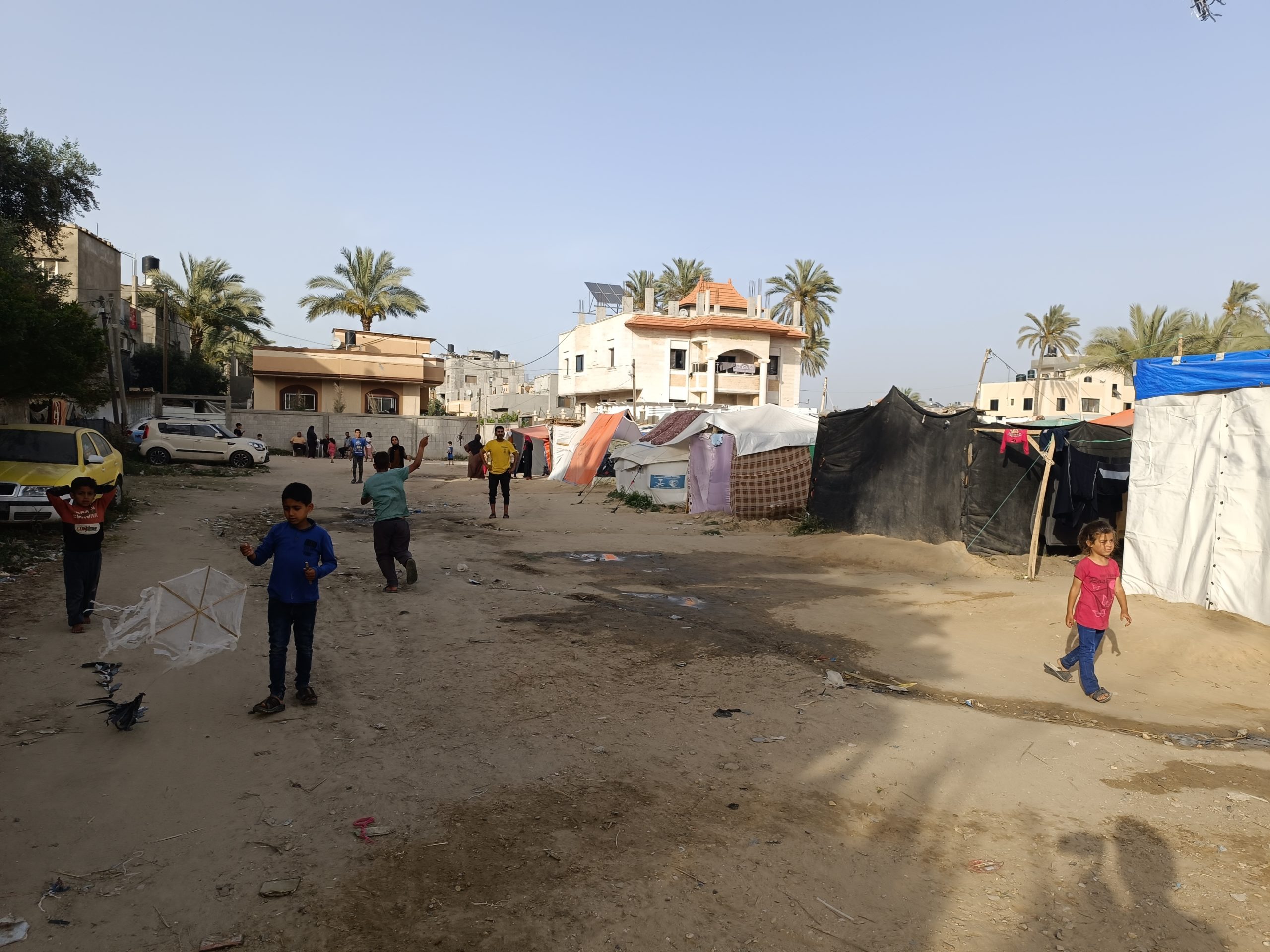
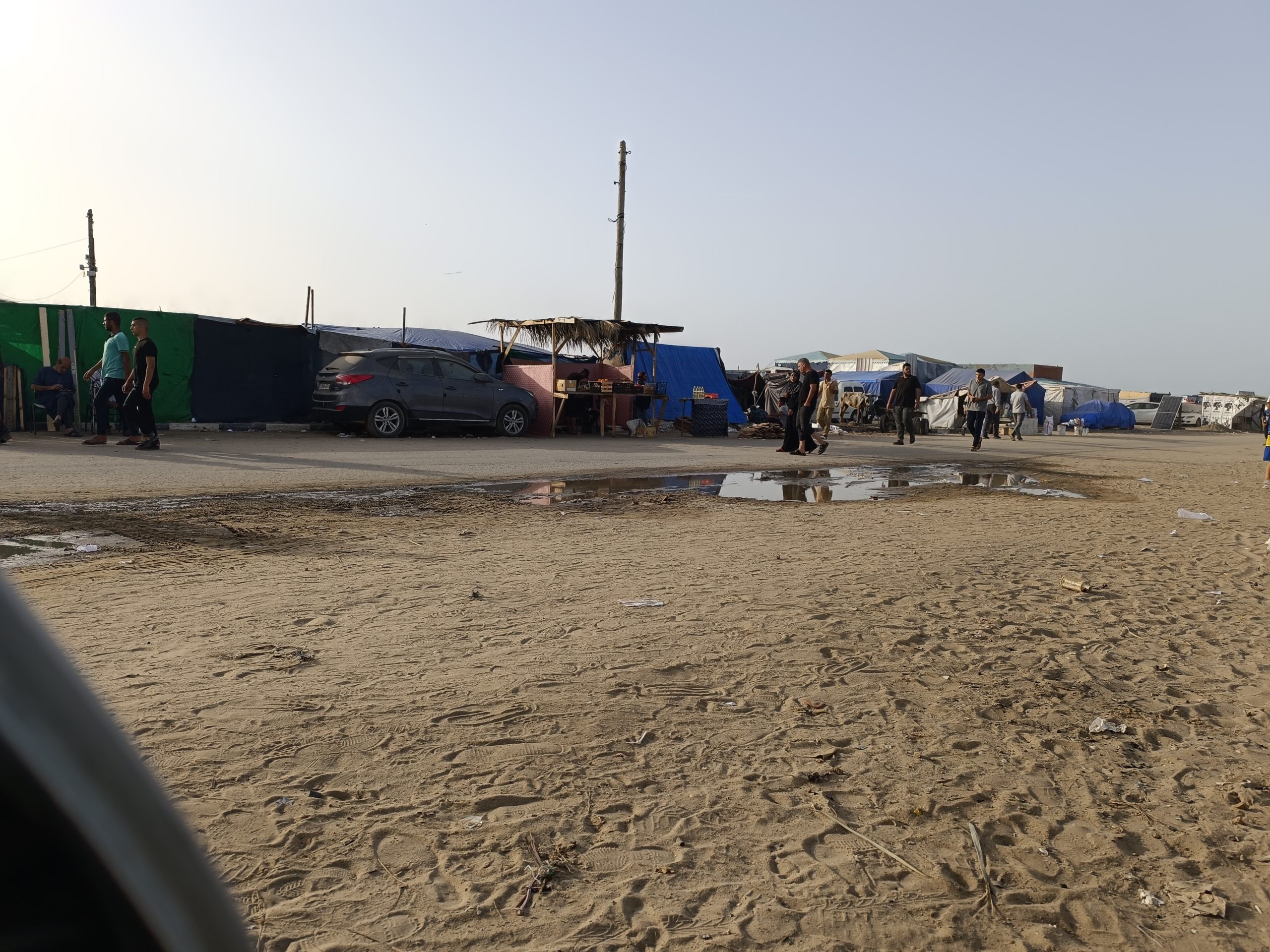
"One of the refugees, who was a teacher, dedicated a tent to educate children," he explained.
"The occupation deprived our children of education since the beginning of the war, therefore these activities are very important," al-Ajjouri added.
"We will look for other activities to support our children. We hope the war will end soon, and the suffering we endure will end, and we can return to our homes safely, God willing."
(The Palestine Chronicle)

– Abdallah Aljamal is a Gaza-based journalist. He is a correspondent for The Palestine Chronicle in the Gaza Strip. His email is abdallahaljamal1987@gmail.com
The post War, Heat and Insects – This is What Life in a Gaza Tent Looks Like appeared first on Palestine Chronicle.
28 Apr 2024 | 6:23 pm
8. Cruelty of Language: Leaked NY Times Memo Reveals Moral Depravity of US Media
By Ramzy Baroud 
As Gaza continues to resist the injustice of the Israeli military occupation and war, the rest of us, concerned about truth, accuracy in reporting and justice for all, should also challenge this model of poor, biased journalism.
The New York Times coverage of the Israeli carnage in Gaza, like that of other mainstream US media, is a disgrace to journalism.
This assertion should not surprise anyone. US media is driven neither by facts nor morality, but by agendas, calculating and power-hungry. The humanity of 120 thousand dead and wounded Palestinians because of the Israeli genocide in Gaza is simply not part of that agenda.
In a report – based on a leaked memo from the New York Times – the Intercept found out that the so-called US newspaper of record has been feeding its journalists with frequently updated 'guidelines' on what words to use, or not use, when describing the horrific Israeli mass slaughter in the Gaza Strip, starting on October 7.
In fact, most of the words used in the paragraph above would not be fit to print in the NYT, according to its 'guidelines'.
Shockingly, internationally recognized terms and phrases such as 'genocide', 'occupied territory', 'ethnic cleansing' and even 'refugee camps', were on the newspaper's rejection list.
It gets even more cruel. "Words like 'slaughter', 'massacre' and 'carnage' often convey more emotion than information. Think hard before using them in our own voice," according to the memo, leaked and verified by the Intercept and other independent media.
Though such language control is, according to the NYT, aimed at fairness for 'all sides', their application was almost entirely one-sided. For example, a previous Intercept report showed that the American newspaper had, between October 7 and November 14, mentioned the word 'massacre' 53 times when it referred to Israelis being killed by Palestinians and only once in reference to Palestinians being killed by Israel.
By that date, thousands of Palestinians had perished, the vast majority of whom were women and children, and most of them were killed inside their own homes, in hospitals, schools or United Nations shelters. Though the Palestinian death toll was often questioned by US government and media, it was later generally accepted as accurate, but with a caveat: attributing the source of the Palestinian number to the "Hamas-run Ministry of Health in Gaza". That phrasing is, of course, enough to undermine the accuracy of the statistics compiled by healthcare professionals, who had the misfortune of producing such tallies many times in the past.
The Israeli numbers were rarely questioned, if ever, although Israel's own media later revealed that many Israelis who were supposedly killed by Hamas died in 'friendly fire', as in at the hands of the Israeli army.
And even though a large percentage of Israelis killed during the Al-Aqsa Flood Operation on October 7 were active, off-duty or military reserve, terms such as 'massacre' and 'slaughter' were still used in abundance. Little mention was made of the fact that those 'slaughtered' by Hamas were, in fact, directly involved in the Israeli siege and previous massacres in Gaza.
Speaking of 'slaughter', the term, according to the Intercept, was used to describe those allegedly killed by Palestinian fighters vs those killed by Israel at a ratio of 22 to 1.
I write 'allegedly', as the Israeli military and government, unlike the Palestinian Ministry of Health, are yet to allow for independent verification of the numbers they produced, altered and reproduced, once again.
The Palestinian figures are now accepted even by the US government. When asked, on February 29, about how many women and children had been killed in Gaza, US Defense Secretary Lloyd Austin said: "It's over 25,000", going even beyond the number provided by the Palestinian Health Ministry at the time.
However, even if the Israeli numbers are to be examined and fully substantiated by truly independent sources, the coverage of the New York Times of the Gaza war continues to point to the non-existing credibility of mainstream American media, regardless of its agendas and ideologies. This generalization can be justified on the basis that NYT is, oddly enough, still relatively fairer than others.
According to this double standard, occupied, oppressed and routinely slaughtered Palestinians are depicted with the language fit for Israel; while a racist, apartheid and murderous entity like Israel is treated as a victim and, despite the Gaza genocide, is, somehow, still in a state of 'self-defense'.
The New York Times shamelessly and constantly blows its own horn of being an oasis of credibility, balance, accuracy, objectivity and professionalism. Yet, for them, occupied Palestinians are still the villain: the party doing the vast majority of the slaughtering and the massacring.
The same slanted logic applies to the US government, whose daily political discourse on democracy, human rights, fairness and peace continues to intersect with its brazen support of the murder of Palestinians, through dumb bombs, bunker busters and billions of dollars' worth of other weapons and munitions.
The Intercept reporting on this issue matters greatly. Aside from the leaked memos, the dishonesty of language used by the New York Times – compassionate towards Israel and indifferent to Palestinian suffering – leaves no doubts that the NYT, like other US mainstream media, continues to stand firmly on Tel Aviv's side.
As Gaza continues to resist the injustice of the Israeli military occupation and war, the rest of us, concerned about truth, accuracy in reporting and justice for all, should also challenge this model of poor, biased journalism.
We do so when we create our own professional, alternative sources of information, where we use proper language, which expresses the painful reality in war-torn Gaza.
Indeed, what is taking place in Gaza is genocide, a horrific slaughter and daily massacres against innocent peoples, whose only crime is that they are resisting a violent military occupation and a vile apartheid regime.
And, if it happens that these indisputable facts generate an 'emotional' response, then it is a good thing; maybe real action to end the Israeli carnage of Palestinians would follow. The question remains: why would the New York Times editors find this objectionable?

– Ramzy Baroud is a journalist and the Editor of The Palestine Chronicle. He is the author of six books. His latest book, co-edited with Ilan Pappé, is "Our Vision for Liberation: Engaged Palestinian Leaders and Intellectuals Speak out". Dr. Baroud is a Non-resident Senior Research Fellow at the Center for Islam and Global Affairs (CIGA). His website is www.ramzybaroud.net
The post Cruelty of Language: Leaked NY Times Memo Reveals Moral Depravity of US Media appeared first on Palestine Chronicle.
27 Apr 2024 | 8:23 pm
9. ‘We Cannot Breathe’ – Gaza Residents Living in Shelters, Inhaling Fume
"We have no alternative for cooking food but to light fires. Our hands have turned black and burnt, and so have our faces".
The Government Media Office in the Gaza Strip has announced that diseases and health complications such as chest pain, breathing difficulties, respiratory illnesses, and asthma have spread across the region due to the lack of cooking gas, which forces residents to rely on open fires for cooking.
Along with a genocidal war, which has killed and wounded well over 110,000 Palestinians in Gaza, Israel has also imposed a complete siege on the enclave.
"There will be no electricity, no food, no fuel, everything is closed," Israeli Defense Minister Yoav Gallant said on October 9. Since that moment, only a very limited quantity of aid has entered Gaza, leading to a catastrophic humanitarian situation.
The Palestine Chronicle spoke with three residents from Gaza, who talked about the hardship they have been enduring during the last seven months.
Our Faces are BurntSecrets by the Sea – Gaza Survivors Seek Respite from Israeli Bombs, Heat and Tents
"We have been out of cooking gas in my house since the first month of the war, and there is no cooking gas in Gaza City to refill our cylinders," Hajj Abu Mahmoud Shhaiber told The Palestine Chronicle.
"I have searched everywhere, but there is no gas available, and the occupation prevents its entry into the north of the Gaza Strip," he added.
Therefore, for the last seven months, the Shhaiber family has been forced to cook our food on firewood. This, however, has caused us significant health complications.
"My wife, my daughters who help us with cooking and myself, we all suffer from chest pain, respiratory issues, and breathing difficulties," he told us, explaining that the problem is exacerbated by the fact that there is no medicine in Gaza City, and that all health centers and hospitals have been destroyed or shut down.
'Domicide' – How and Why Israel Destroyed the Al-Sahli Towers in Gaza's Nuseirat Refugee Camp
"We have no alternative for cooking food but to light fires. Our hands have turned black and burnt, and so have our faces," Shhaiber continued.
No Other Option"I always feel short of breath, and I am constantly coughing and wheezing, but unfortunately, we have no alternative, due to the Israeli siege."
"I still live with my children in the Northern Governorate. My home and my family's home were destroyed, but we live in displacement centers," Rond al-Masri told us.
"I lost my gas cylinders during the bombing of my house, and I don't have a stove or gas for cooking. Therefore, I have to rely on canned food when it's available to feed my children," she continued.
Rond told us that they are forced to light fires to prepare food.
"There is no other option available to us, and there is no alternative to cooking gas but to light fires. Throughout the day, my children search for wood and cardboard for us, and if available, we light a fire and prepare food," Rond said.
'My Life is Sad' – Palestine Chronicle Children's Press Conference in Gaza
Rond's children got sick and the woman explained that this is due to a combination of factors.
"They have fallen ill due to poor hygiene, and from spending long hours under the sun searching for food. Moreover, exposure to carbon monoxide from the fires and the smoke they constantly inhale have caused us respiratory diseases," the woman said, desperately.
"In northern Gaza, there are no hospitals or clinics to obtain medication . I can only heat some water for my children to drink and alleviate chest and respiratory pains," Rond said.
'Immediate Actions'According to another resident, Muatasim Jabr, this is part of Israel's deliberate policy to kill Palestinians in every way possible.
"They kill us by bombing and gunfire, but death by hunger is the most painful and agonizing. Killing through disease by spreading respiratory illnesses in the absence of treatment is also incredibly painful and deadly," he said.
"Many respiratory diseases require oxygen, and the occupation destroyed the central oxygen room at Al-Shifa Hospital," Jabr explained, adding that now there is only a small oxygen room at the Kamal Adwan Hospital, in the Jabaliya refugee camp.
'Dizzy, Tired, Exhausted' – How Palestinians in Gaza Speak about the Widespread Famine
"Unfortunately, it is insufficient to cover the thousands of cases in need of oxygen due to bombings, killings, and the spread of diseases," the main said.
Jabr called on international institutions, the United States, Arab countries, and European countries to pressure the occupation to stop the war and to provide the basic needs for the residents of the Gaza Strip.
"We need immediate action to save Gaza from the environmental, health, and humanitarian disasters caused by the occupation during this war".
(The Palestine Chronicle)

– Abdallah Aljamal is a Gaza-based journalist. He is a correspondent for The Palestine Chronicle in the Gaza Strip. His email is abdallahaljamal1987@gmail.com
The post 'We Cannot Breathe' – Gaza Residents Living in Shelters, Inhaling Fume appeared first on Palestine Chronicle.
27 Apr 2024 | 8:10 pm
10. From Gaza to Columbia: Takeaways from the New Student Movement
By Benay Blend
In a move that highlights Kanafani's call for breaking boundaries, students from various associations in Gaza issued a statement calling for a global student bloc.
Shortly after October 7, students at Columbia wrote a statement expressing sympathy for Israeli and Palestinian individuals who had lost family members on that day. What at first sounds like "both sides-ism" evolves into an analysis that holds Israel's colonial system accountable for its actions.
"The weight of responsibility for the war and casualties undeniably lies with the Israeli extremist government and other Western governments," the statement reads, "including the U.S. government, which fund and staunchly support Israeli aggression, apartheid and settler-colonization." It then goes on to bring the issue home by calling for the following: an end to the university's discrimination against Palestinian students; divestment from joint programs with Israeli institutions, and finally, acknowledgement that under international law, Palestinians have a legal right to resist.
In retaliation, Columbia suspended the charters for Students for Justice in Palestine (SJP) and Jewish Voice for Peace JVP). When the students established an encampment in solidarity with Gaza on the university's lawn, President Shafik authorized the police to sweep the camps and proceed with mass arrests.
Undaunted, students continue to hold down the protest which has now spread to other campuses. The number of encampments as of a few days ago was at least 50. Aside from the most obvious, that for the first time since perhaps the Occupy movement, there are the origins of a new national, coordinated campaign, there are several other takeaways from the student camps.
In New York City, responses from government and university officials prove that the notion of diversity does not often lead to change. For example, the president of Columbia University, Menouche Shafik, is an Egyptian woman, testified before recent House Education and Workforce hearings that in her mind such chants as "from the river to the sea, Palestine will be free" and "long live the Intifada" are anti-Semitic.
Matching her rhetoric with direct action, Shafik requested that the police perform a sweep of the pro-Palestinian Columbia encampment and arrest students as well as faculty supporting them. By equating Judaism and Zionism, support for Palestinian liberation with terrorism, Shafik has turned the campus into a police state, thereby turning the clock back to pre-1968, before a similar student rebellion led to protections for speech and protest on campus.
State officials have followed suit. New York Governor Kathy Hochul eventually apologized for saying that "there would be no Canada" if it attacked Buffalo, in an analogy to October 7th. By assuming that this is a logical comparison, Hochul glosses over the ways that Israel has turned Gaza into an open air concentration camp, a position that gives it the legal right to resistance.
Hochul went on to explain her desire to visit Israel, a country she believed had endured its own 911, thus comparing the Resistance to the terrorists who struck the towers, again a false analogy that cancelled out her earlier apology. Hochul declined AIPAC's offer to pay for her trip to Israel but said later that New York taxpayers would foot the bill for the trip.
New York Mayor Eric Adams, a moderate Democrat from the black community, also visited Israel. "I am going to try to find a plot of land so it can be my retirement place," Mr. Adams told the magazine Mishpacha. "I love the people of Israel, the food, the culture, the dance, everything about Israel." Apparently Adams has no problem with living on stolen land, a stance that perhaps explains his condemnation of the "antisemitism being spewed at and around the Columbia University campus," again equating Zionism with Judaism, a false comparison apparently popular with US politicians.
At the University of New Mexico (UNM), the encampment's launch coincided with Nizhoni Days, an annual celebration of Native culture and education hosted by UNM Native students, Native student organizations, and supporting UNM departments. In a state with a large Indigenous population, it makes sense that there should be connections between stolen land at home and colonialism abroad, with Palestine at the center.
David Correia's An Enemy Such as This: Larry Casuse and the Fight for Native Liberation on Two Continents over Three Centuries (2022) traces the life and death of Larry Casuse, an Indigenous freedom fighter whose struggle against colonialism in New Mexico, where, Correia writes, settler colonialism was born. His struggle, and indeed his family's generations-long fight, provides lessons for those fighting against settler colonialism today.
On day 4 of the UNM encampment, April 25, participants are asked to wear red to honor Missing and Murdered Indigenous Relatives (MMIR). Included on the shrine pictured in the above photo there is a graphic of a watermelon, a symbol of Palestine, along with a demand for Land Back.
In honor of Diné-Palestinian Solidarity, activists are showing the film "Spaces of Exception" which draws connections between Rez life and Palestinian refugee camps. Showings are at the Navajo Nation Museum on April 26 and at the Fort Defiance Chapter House on April 27.
Students across multiple Atlanta universities are protesting the genocide of Palestinians as well as the Cop City project, an institution that would destroy the Weelaunee Forest. Moreover, it was managed by the Muscogee and Cherokee peoples before it became a slave plantation then morphed into an Atlanta prison farm.
The proposed destruction of a forest in Atlanta, Georgia in order to make way for Cop City serves as a case study for the ways in which settler colonialisms are connected. The origins of the project can be traced to the Israeli Urban Warfare Training Center (UWTC), funded with $45 million from the U.S. These centers are laboratories for strategies deployed against marginalized peoples that range from occupied Palestine to the working-class and undocumented communities in Atlanta.
At many of these encampments internationalism is on full display, a strategy that harks back to the late Palestinian revolutionary/writer Ghassan Kanafani. As Louis Brehony notes, Kanafani played an important role in placing the Palestinian struggle into an internationalist, anti-imperialist perspective.
"Imperialism has laid its body over the world," Kanafani wrote, "the head in Eastern Asia, the heart in the Middle East, its arteries reaching Africa and Latin America. Wherever you strike it, you damage it, and you serve the world revolution."
Given that Kanafani believed the Palestinian cause was not for Palestinians only, but instead belonged to all the "exploited and oppressed masses" of his era, he would have welcomed that sector to join the student movement.
In a move that highlights Kanafani's call for breaking boundaries, students from various associations in Gaza issued a statement calling for a global student bloc. "It is time to smash the US imperialist war machine," they declared. "From Gaza to Columbia, to Ann Arbor and Berkeley, our hands are joined to end Nazi genocide and achieve our collective liberation."
Writing for Mondoweiss, Yumna Patel recalls her participation in Students for Justice in Palestine (SJP) at NYU at a time ten years ago when protests did not draw the crowds that it does today. "We are witnessing history in real time," she writes, "and one can't help but feel that while the crackdowns will no doubt escalate, these students are charting a new path forward in this country. A path that rejects colonization and imperialism, and rejects the complicity of our academic institutions in the U.S. war machine and in global oppression."
Despite her elation, Patel expresses fear that "protests that were quite literally started in order to bring attention to the genocide in Gaza, have instead themselves become the story." Rather than blaming students, who she believes are acting in good faith, she calls on the media to continue centering news from Gaza, where reports of mass graves have just unfolded.
Though Israel has targeted educational institutions in Gaza time and time again, its students are still determined to continue their studies. On April 15, Palestine Chronicle Gaza correspondent Abdallah Aljamal posted an interview with Mohammed Abu al-Rous, a teacher at the Malaysian Quranic School on the outskirts of the Nuseirat camp.
Though Israel tries to destroy the rights of children to their education, they will not win. "We will teach our children in tents, under the sun, and anywhere else," declared Abu al-Rous. "We are determined to raise an educated and informed Palestinian generation, capable of resisting the occupation and exposing its crimes in all international forums."
This is the story, Abu al-Rous and others like him. The student camps are there in solidarity to make sure that they succeed.

– Benay Blend earned her doctorate in American Studies from the University of New Mexico. Her scholarly works include Douglas Vakoch and Sam Mickey, Eds. (2017), "'Neither Homeland Nor Exile are Words': 'Situated Knowledge' in the Works of Palestinian and Native American Writers". She contributed this article to The Palestine Chronicle.
The post From Gaza to Columbia: Takeaways from the New Student Movement appeared first on Palestine Chronicle.


